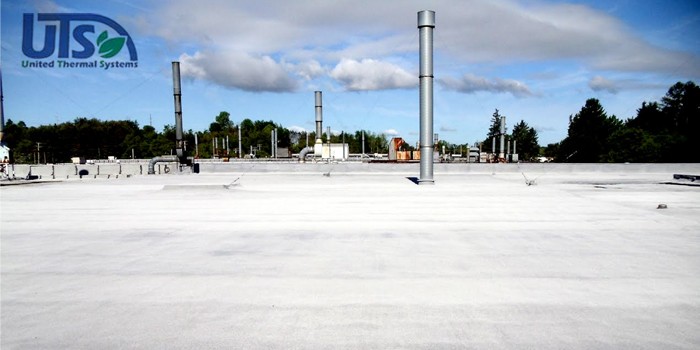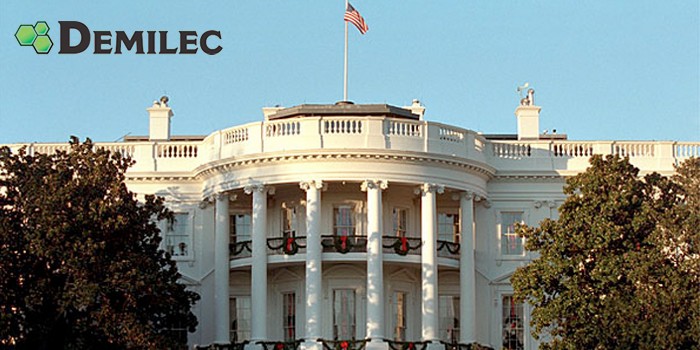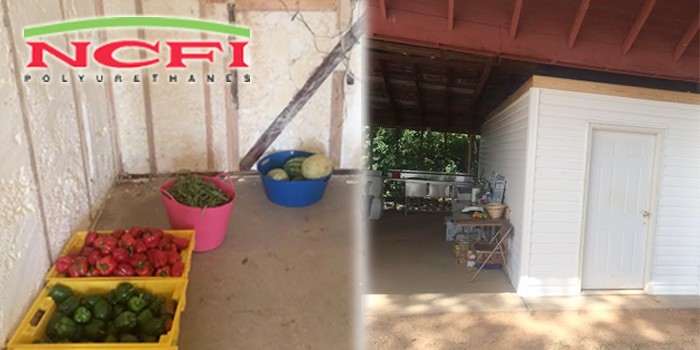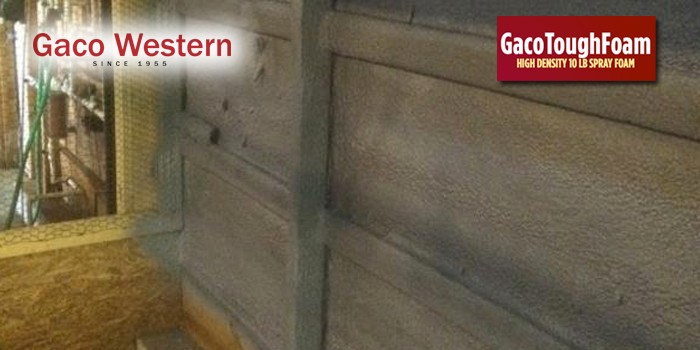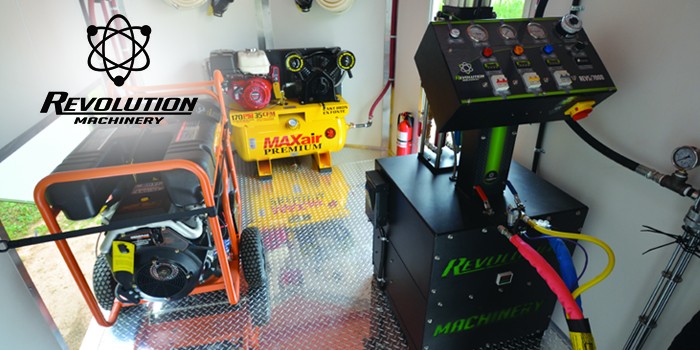Hertz Car Rental Kiosk Installed With Spray Polyurethane Foam Roofing System
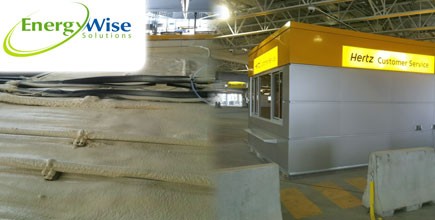
NEW ORLEANS, LA – March 1, 2013 – Due to the economic recession, the rental car industry took a plunge in 2009. When the airline industry took a hit, people were traveling less for leisure, and business travel was on the decline, so car rentals were less in demand. In 2011, however, the industry slowly emerged from its downturn and the following years have been positive for the industry.
Due to the renewed demand for car rental services, companies such as Hertz Car Rental have been able to upgrade their kiosks at major airports throughout the United States. Since many of the kiosks are located inside airport parking garages, insulating them can be a challenge. The structures are typically 10 to 11 ft. high and the roof can be just feet from the parking garage ceiling.
JDK General Contractors, a firm that does a lot of work in commercial construction at airports in the U.S., constructed one such kiosk for Hertz customer service at the New Orleans International Airport. Since the kiosk is located inside a parking garage, the contracting firm faced some unique obstacles when considering a roofing system. Installing a traditional roofing system in such a tight space would be difficult, so JDK contacted EnergyWise Solutions (EWS), a spray foam contractor who had already installed spray foam at kiosks for Hertz at the Nashville Airport, the Hertz kiosk at the Memphis Airport, and for Hertz and Avis at the New Orleans International Airport.
President and CEO of EWS, Scott Van Kerkhove, believed spray foam was the best insulation option for these types of roofs.
“A traditional type of roofing you’d put on top of a building might be a single- or double-ply roof where, even under the best circumstances, getting in tight spaces is very difficult,” he said. “The application of spray polyurethane roofing foam in these cases allows us to get into very tight spaces because wherever you can reach and shoot the foam with the gun – you can do a good job of sealing up the spaces by getting to areas that would otherwise be very difficult to get to with traditional roofing applications.”
Since the kiosks are normally located within the interior of a parking garage, water leakage is not typically an issue, according to Van Kerkhove. However, the roofs are often equipped with several conduits that require frequent maintenance, making it imperative that they are durable enough for workers to walk on. EWS used 2.8 lb. closed-cell spray foam to provide that type of durability.
“There’s a lot going on on that little roof with wiring conduit and a/c ducts,” said Van Kerkhove. “Lights that are installed on the garage ceiling, in some cases, are suspended above the little buildings, so you’re going to have periodic maintenance and you wouldn’t be able to do that if you put 0.5 lb. or even 2.0 lb. foam up there – it wouldn’t be ideal to go up there and step on that roof.”
Maneuvering their rig and dealing with security at airports was also a consideration. There are different height limitations at airport garages and, in the past, EWS had to park outside the garage and run 1,000 ft. hoses from their commercial trucks to a second or third floor. Fortunately, the garage at the New Orleans International Airport allowed crewmembers to get their rig close enough to the project site without resorting to such measures.
Although the kiosk was sectioned off from the rest of the garage due to construction, wind had a tendency to whip through the garage, so crewmembers prepped the area for overspray protection. They covered the kiosk with plastic draping and wrapped plastic from the roof to the garage ceiling, a distance of about three feet, containing any overspray within that area to protect nearby vehicles.
Crewmembers then employed a Graco air-powered King proportioning pump for the spray foam roofing application, using ladders to reach the tight space between the kiosk roof and garage ceiling. While wearing fresh air masks, they applied a nominal thickness of 4 inches of EnergyWise 2.8 lb. closed-cell spray foam to the roof. The foam thickness varied from 4 to 5.5 inches in order to attain a flat surface on the corrugated R-panel roof.
“We put some pretty thin guys up there,” Van Kerkhove quipped about the tight quarters. He added that most kiosk roofing applications are the same. “Some need less foam, which is a call the architect makes for one reason or another, but it’s usually 4 inches and usually the same type of roof located in a parking garage.”
A two-man crew completed the project in about two days during January of 2013. The total spray area was 1,200 square feet. Although the job did not cover a large area, it required more time due to the nature of the project.
“A 1,200 sq. ft. roof if you were in open space might take half a day,” said Van Kerkhove. “But in this type of case, it’s more complicated and can take a couple of days.”
Hertz and JDK were pleased with the outcome of the spray foam roofing application since it provided both a sealed barrier for better energy efficiency inside the kiosk and a stable surface for other trades to safely access the roof.
About EnergyWise Solutions: EnergyWise Solutions has a long-standing history of commitment to quality and reliability in energy-efficient technologies. The company invites customers to take advantage of their exceptional products and services, backed by the EnergyWise guarantee. EnergyWise supports customers with a variety of energy efficient products and services. For more information about EnergyWise Solutions, please use the contact details and links provided below.
Disqus website name not provided.




